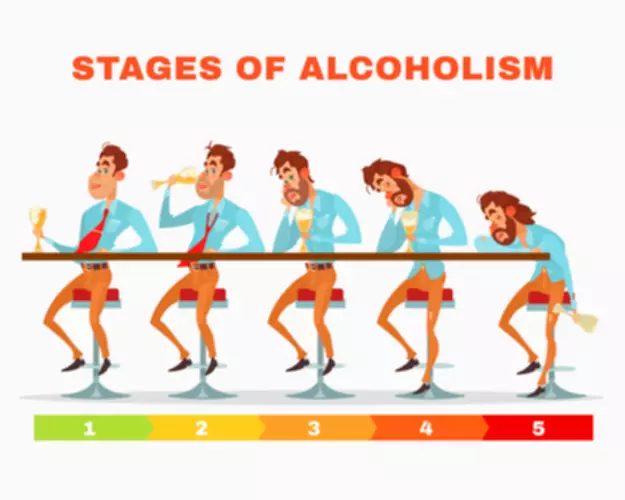
Patients how long does it take to recover from cannabinoid hyperemesis syndrome typically discontinue hot bathing when symptoms are not present and begin it again once nausea and vomiting recur after future cannabis use. If you’re a long-term cannabis user experiencing cyclic vomiting, abdominal pain, and relief with hot showers, consult a healthcare provider for a proper diagnosis. There have been a few reported cases of death directly caused by cannabis hyperemesis syndrome. Some of them were linked to severe complications such as hyponatremic dehydration, in which low levels of sodium in the blood cause dehydration. In these cases, the patients had a history of chronic cannabis use and recurrent episodes of nausea, vomiting, and abdominal pain. It should not be used in place of the advice of your physician or other qualified healthcare provider.
How long does it take to recover from CHS?
This might also suggest that cannabis is more addictive than previously understood. The statements made regarding cannabis products on this website have not been evaluated by the Food and Drug Administration (FDA). Cannabis is not an FDA-approved substance and is still illegal under federal law. The information provided on this website is intended for educational purposes only and is not intended to diagnose, treat, cure, or prevent any disease.
What are the Cannabinoid Hyperemesis Syndrome Symptoms?

Once patients achieve stability with TCA therapy, evidenced by no emergency department visits for at least one year, the amitriptyline dosage can often be tapered or discontinued entirely over the following year. Female patients are frequently motivated to taper off amitriptyline in anticipation of pregnancy. This study’s findings indicate that over 40% of patients discontinue all treatments 105. The orthosteric ligands of the CB1R were considered to be potential pharmaceuticals in the treatment of disorders such as drug addiction, obesity, and pain 33. However, cannabinoid receptor activation results in adverse psychoactive effects (including depression and suicidal thoughts), which is concerning for them in clinical use 104. With more research, the complexity of allostery can be elucidated, which will be beneficial in the development of safe and efficacious drugs with no neuropsychiatric side effects.
Cannabinoid Hyperemesis Syndrome Diagnosing CHS – Hollywood Cannabinoid Hyperemesis Syndrome
Multiple studies report pathological frequent and prolonged hot shower behaviors with CHS. Hot showers have been reported to assist in stabilizing the hypothalamic thermostat, frequently altered by chronic cannabis use 51. Accordingly, they have been reported as one of the therapeutic modalities for the management of the CHS. Further, these behaviors could also be noted in CVS, preadolescents, and adolescents with no prior exposure to cannabis 8. These changes from hot bathing are probably not specific to CHS but can be seen across all functional nausea and vomiting disorders, including CVS, and are probably aggravated by cannabis use 9. Thus, hot shower bathing may be more closely related to CHS, but is neither specific nor sensitive in its diagnosis.
We facilitate these connections by offering a curated list of high-quality marijuana brands and experienced medical marijuana doctors, ensuring users receive the best possible care and products. Cannabinoid Hyperemesis Syndrome (CHS) is a complex condition that can bring about intense nausea, vomiting, and abdominal discomfort. This syndrome primarily affects individuals who have regularly consumed marijuana over a long period. Recent statistics indicate that CHS can occur in as many as 6 per 1,000 long-term marijuana users aged 16-24, underscoring its growing significance as a public health concern. Moreover, discussing cannabis use openly with healthcare providers allows for better-informed decisions regarding future consumption habits and overall health management. In other words, the drug you might use to treat nausea in low doses can have the opposite effect in high doses over time.
Paying for Treatment
- In other words, the drug you might use to treat nausea in low doses can have the opposite effect in high doses over time.
- Avoiding cannabis is hard and overcoming cannabis use disorder is challenging.
- It leads to severe nausea, vomiting, and abdominal pain due to overstimulated cannabinoid receptors.
- The symptoms of CHS often improve rapidly once marijuana use ceases, underscoring the importance of immediate supportive care.
- These advances enhanced the understanding of cannabinoid (CB) receptors, which led to a better appreciation of the role of cannabis in inflammation, seizures, emesis, and as an appetite stimulant.
- The frequency and prevalence of CHS change in accordance with the doses of tetrahydrocannabinol and other cannabinoids in various formulations of cannabis.
Death due to CHS is uncommon, but it is important to know that the severity of vomiting that can occur with CHS can lead to serious chemical abnormalities, which can have negative consequences including death. First, much of the existing literature on CHS relies on case reports and observational studies, which may limit the generalizability and reliability of the findings. Second, the pathophysiology of CHS remains poorly understood, with a focus on clinical observations rather than mechanistic research.
Medical Supervision
Seek medical attention, disclose cannabis use honestly, and consider discontinuing cannabis under medical supervision. No specific test confirms CHS; labs are used to rule out other conditions. It is caused by long-term, frequent use of cannabis, although the exact mechanism is not fully understood. Readers of this website should contact their attorney to obtain advice with respect to any particular legal matter including decisions on what products are, or are not, legal to sell, possess, or consume. No reader, user, or browser of this site should act or refrain from acting on the basis of information on this site without first seeking legal advice from their own counsel in the relevant jurisdiction.
What causes CHS?

The three stages of CHS are the prodromal phase of CHS, the hyperemetic phase of CHS, and the recovery phase of CHS. CUD is treated with psychotherapy, which involves motivational interviewing, cognitive behavioral therapy, and contingency management. Our dedicated professional staff is here to guide you or your loved one on the journey to lasting recovery, offering support every step of the way. Some theories suggest that heat may relax abdominal muscles or provide psychological comfort—though more research is needed to fully understand this phenomenon. Identifying personal triggers—such as certain foods or stressful situations—can help mitigate symptom severity during recovery.

However, one study indicated that over 32% of people who identified as frequent marijuana users and visited an emergency department met the criteria for CHS. This figure might suggest the problem is more common than many realize, especially as more U.S. states legalize marijuana and higher-potency products flood the market. The most effective way to reduce the effects and risks of Sober living house CHS is to stop using cannabis. Medical treatment is recommended for managing symptoms and preventing complications.
What causes cannabis hyperemesis syndrome?
Connecting with others who understand similar experiences can foster a sense of community and aid recovery processes. Cannabinoid Hyperemesis Syndrome can last from days to weeks, depending on individual circumstances and treatment methods. Even cannabis products that don’t contain THC have the potential to cause or worsen CHS. If you need help quitting cannabis, the Substance Abuse and Mental Health Services Administration offers a 24/7 helpline in English and Spanish.


